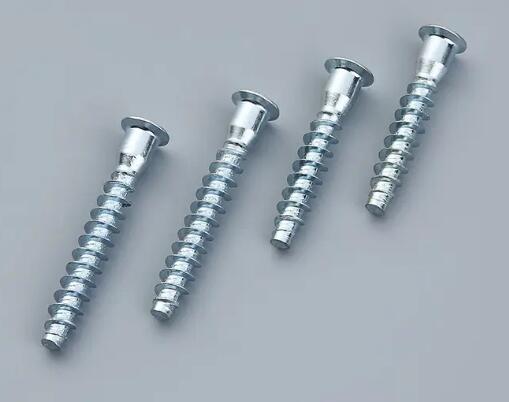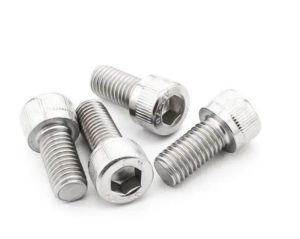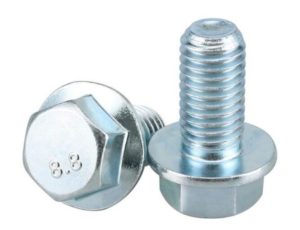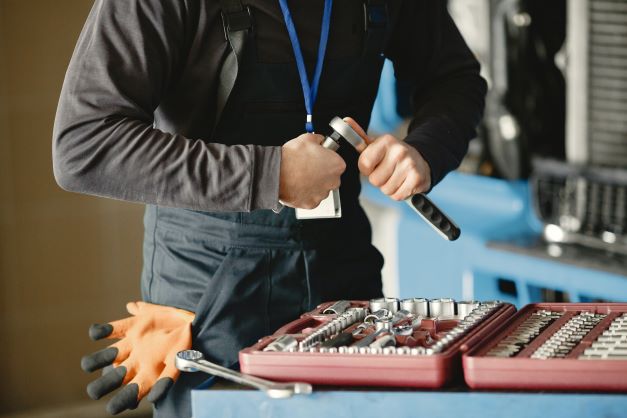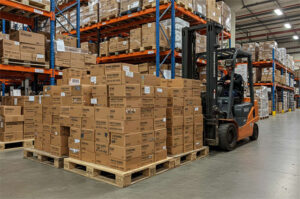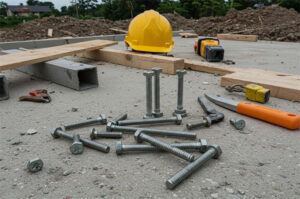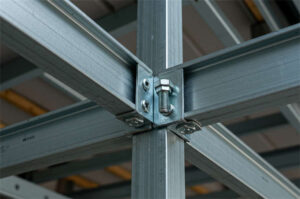The Definition of the Types of Bolts, Nuts, and Washers
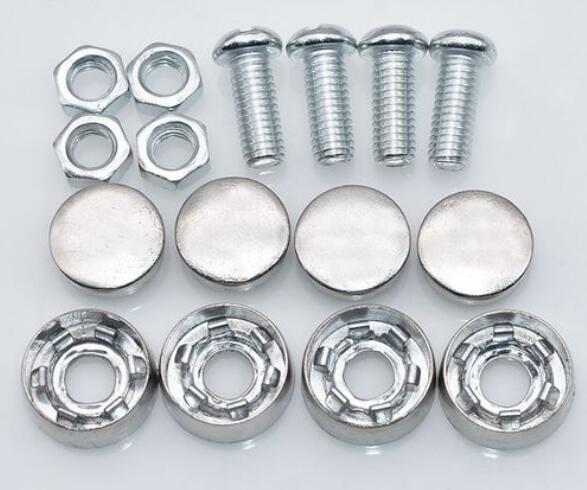
Bolts, nuts, and washers, what do they have in common? These three types of fasteners are all under the category of non-permanent or temporary fasteners. They are removable mechanical parts that share a common function to fasten/affix, join, and hold materials together.
Bolts and nuts are designed to match each other in critical applications, nuts are inserted through the threads of bolts to tighten an assembly. While the washer is an enhancing device inserted between a bolt and a nut to help in distributing the load over the surface and materials.
The matched types of non-permanent threaded fasteners
Bolts
Usually feature a hexagonal head but can be also modified in different head types and head drives. Bolts have cylindrical male threads in their shank (body) that have full or partial threading. Unlike screws, bolts have an untapered body which makes them unable to tap into the surface of the application, hence the need to pre-drilling a pilot hole for its installation.
Anchor Bolts are used in construction for joining materials into a concrete surface or base of steel poles.
Blind Bolts allow the fastening of materials that have a blind spot or can only be reached from one side.
Carriage Bolts are mainly applied in wood base fastening or wood-to-metal applications.
Flange Bolts consist of a flange head that acts like a washer, commonly used for areas of automotive, piping, plumbing, etc.
Hex Bolts are also referred to as machine screws. Mostly applied in tight spaces of fastening in industries of building and infrastructure.
Socket Head bolts have internal threading to suit the application in confined spaces like machine assembly
Square Bolts are easy to install because of the prominent head feature that can easily be installed using a wrench.
U-bolts are basically U-shaped or curved, consisting of partial threading on both ends. Known for hanging or securing pipes, tubes, and other structures that need restraint.
Nuts
Unlike the common threaded fasteners, nuts largely differ in physicality. They are usually in form of circular, hexagonal, and square prisms with internal threading. Nuts cannot function alone and thus require a mating fastener with male threads like bolts or screws. This mechanical device is used for enhancing the grip and hold of bolts into the materials.
Flange nuts have the same feature as flange bolts. Its wide flange distributes the pressure all over the materials.
Hex nuts are six-sided in the form used in pairing hex bolts or other compatible types of bolts.
Lock nuts are known for their self-locking ability that prevents the loosening of bolts due to vibrations.
Slotted nuts offer an efficient fastening and locking application. They can be used in bolts and screws along with a cotter pin.
Washers
An easy distinguishing feature of washers is their flat disc form with an opening hole in their center. Its significant function is to evenly distribute the load that fasteners receive to add an efficient level of durability to the assembly.
A Spring washer acts as a spring that receives the force load in the assembly and distributes it around the materials involved.
Lock washer prevents the loosening of nuts and bolts due to vibration or corrosive elements usually in applications of trucks, cars, etc.
A plain washer refers to the standard or plain form of the washer.
What Are the Markings in Bolts?
The particular markings found in the head of bolts and nuts are a distinct feature that characterizes their manufacturing quality. Do you often see and wonder why there are numbers, letters, dashes, or an assortment of symbols in your fasteners? They identify the grades or standards of the bolts. A certain grade on fasteners also determines their capacity for strength, durability, etc. Some sizes of bolts that are small in diameter can lack the identification mark on the head. However, they are strictly manufactured to follow the standards.
Grades of Steel Fasteners
Steel is a common type of material used in the production of fasteners. These are the following grades of steel;
- Grade 2: the common and less expensive steel perfect for the high precision requirement
- Grade 5: processed to harden in quality and increase the strength of automotive applications
- Grade 8: the hardest type among all three and is used in critical and stressful applications
Grades of Stainless Steel Fasteners
Stainless steel is the most commonly used material in fasteners today. They propose higher capabilities than any other type of metal element. Stainless steel has certain grades that define different classifications.
- 18-8 Stainless steel: common and standard grade, represents an 18% chromium and 8% nickel
- 316 Stainless Steel: consists of mid-range carbon and is excellent in applications that involve saltwater and chlorine
- 410 Stainless Steel: high strength and hardness quality better than 18-8 but is less resistant to corrosive elements
Understanding the Application process of Fasteners
The application of fasteners has a wide range of levels and classes. It is known to many that fasteners generally are applied in mechanical, industrial, and engineering fields to function in benefiting the overall process such as the security of most parts. The main consideration of the fastening industry is to understand the materials and their application. Let’s recognize the factors that apply in the process;
Knowing the right type of fastener
This process is the primary and essential step in fastening. It’s important to know the accurate type of fastener to use in your applications because they define the subsequent principles of the process. Here are the identifying features that affect the decision in choosing a fastener type;
- Threading
- Yield strength
- Standard grade
The estimated quantity of the fastener in the application
After getting the right type of fastener it’s best to follow the estimation of the quantity or number of fasteners you need to efficiently acknowledge the project in measures.
Installation process
The variations of fasteners allow multiple types of application processes in terms of tooling and methods. The common tools for fastener applications include screwdrivers, wrench tools, power drills, electric drills, automatic nail stamps, and more.You can easily install or replace a kitchen faucet by using tools like wrenches, screwdrivers, and pliers to tightly secure the faucet and prevent leaks.
Environmental exposure
Before fastening the surrounding environment applications should be given attention. This allows us to choose the components with suitable elements for making a perfect and balanced assembly. Example: The best fastener type that can last long in applications that involve saltwater (i.e offshore plants) are stainless steel fasteners.
Properties of materials to be joined
It’s not a mystery why metal elements can corrode and fail over time. There are known variables that contribute to the damage and failure of fastener applications. Metal properties can be extremely corrosion-resistant, yet destructive to some other types. So before you get on fastening, know the properties of your components vs the surface material and see if they can be suitable for each other.
For more great fastening tips you can directly message us. We provide the best fasteners for a wide variety of applications.
